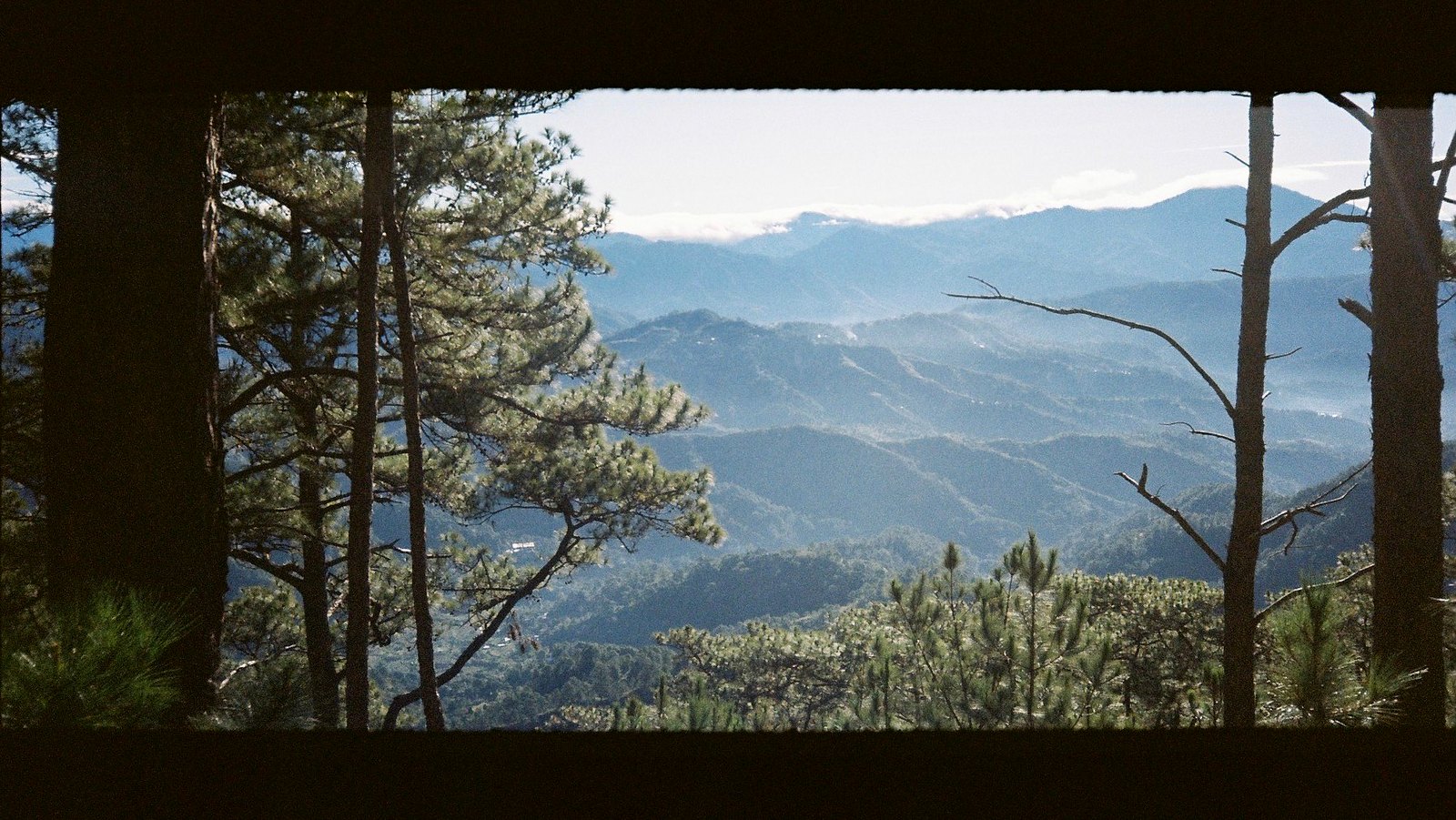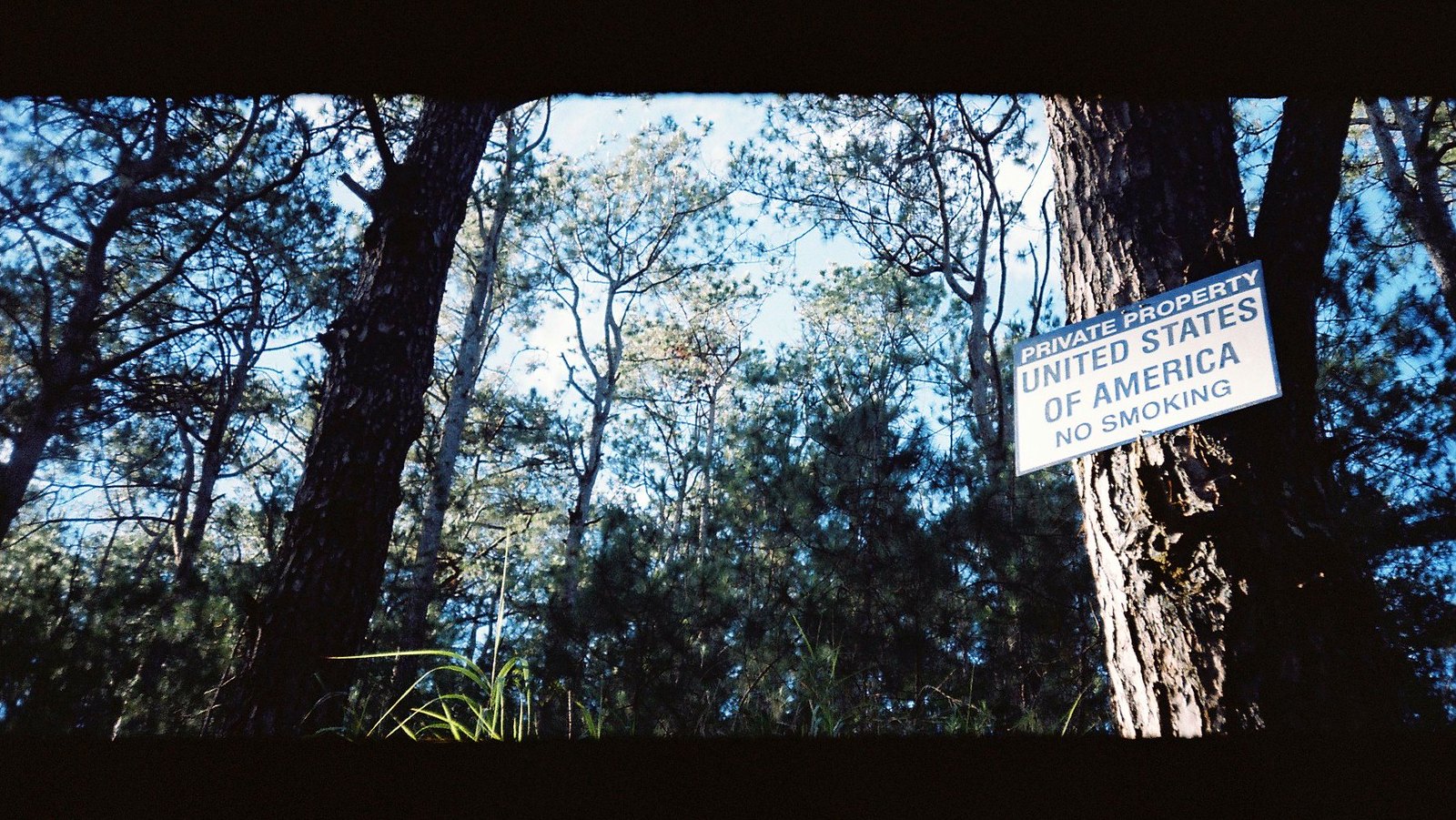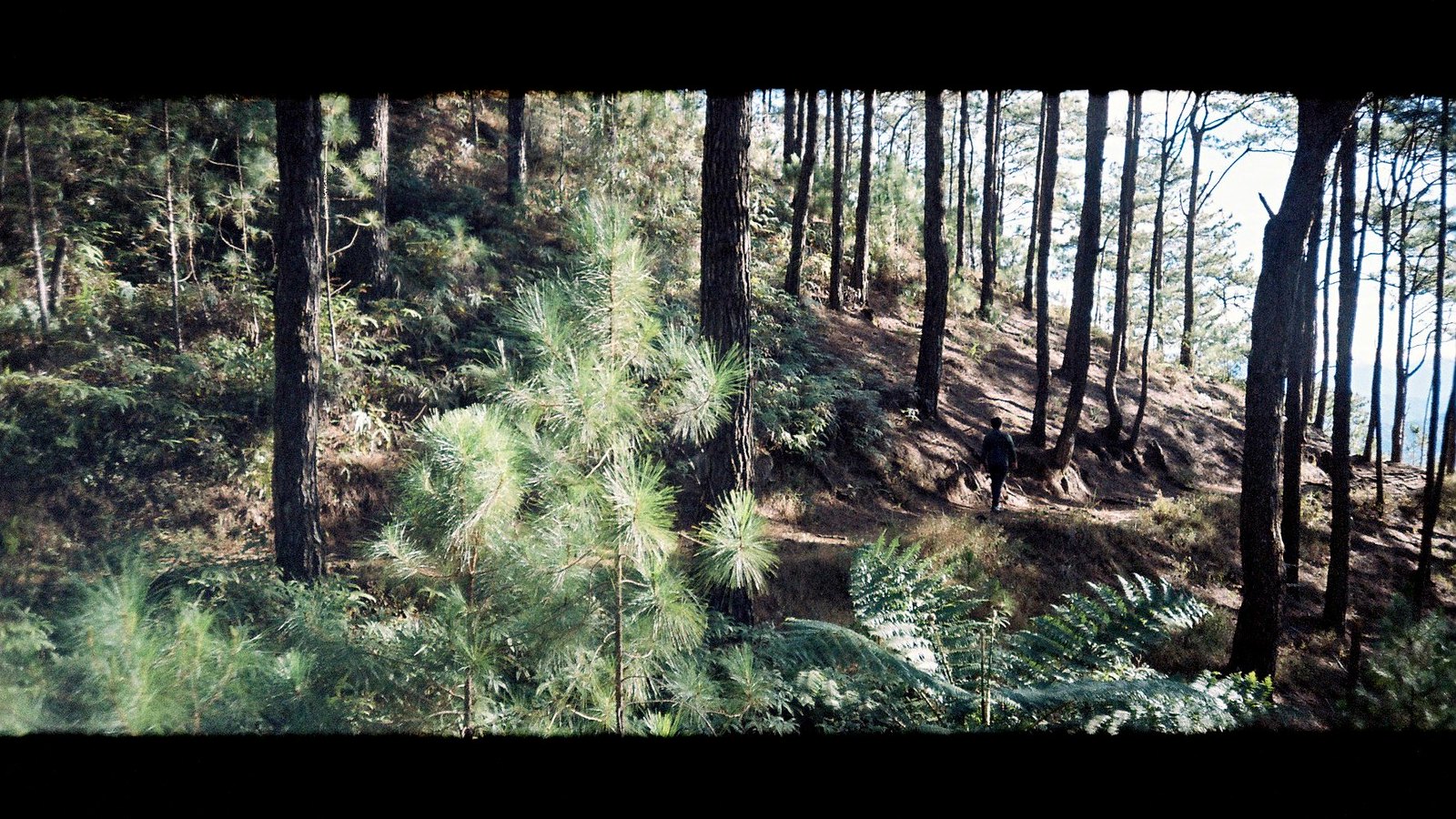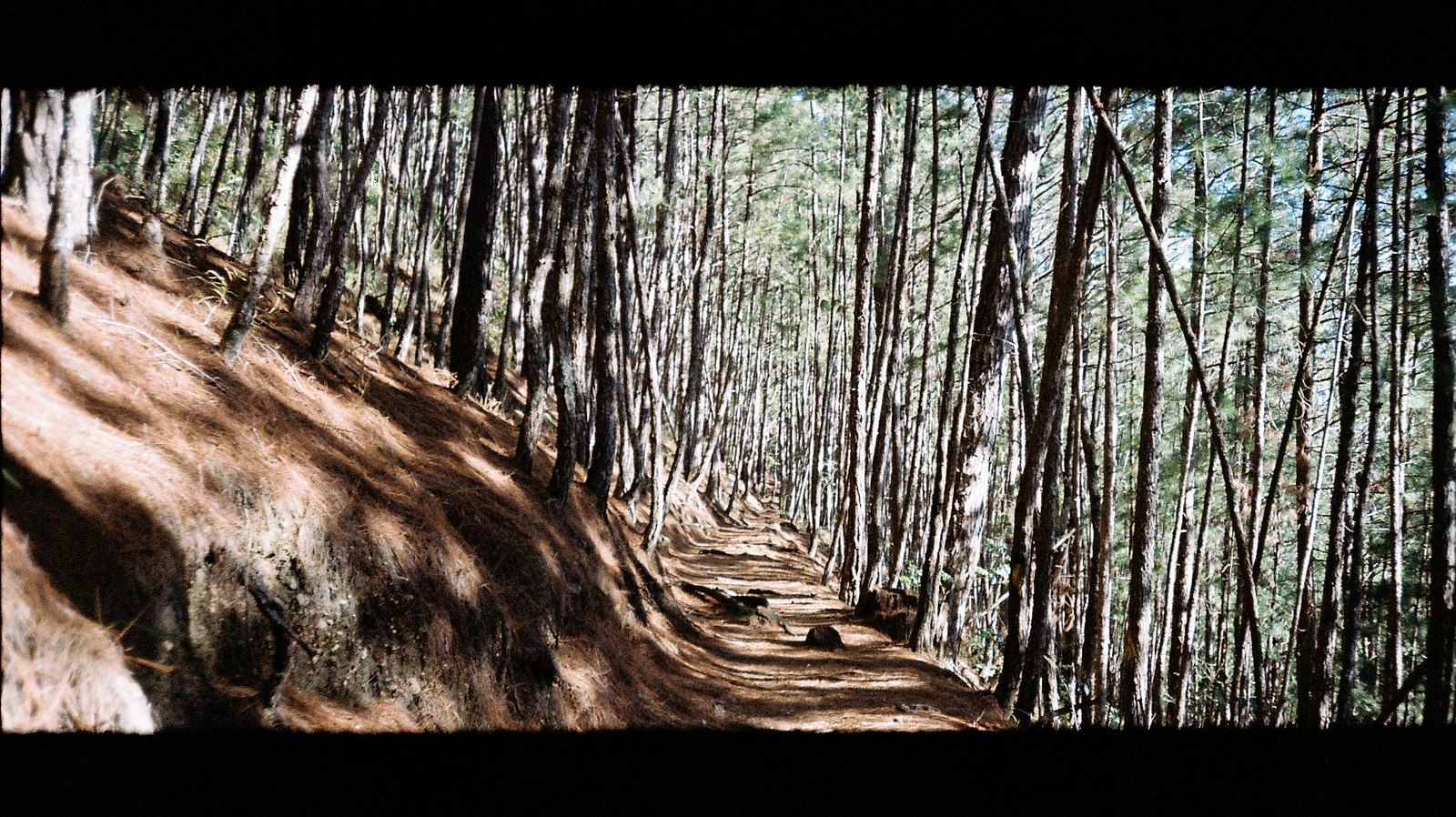 |
| The testing ground for my Sandugo Eiger shoes. |
This post is full of photos of my shoe-clad feet, so if you don't mind that, read on.
I've planned on getting shoes I could use for trail running (I'm a beginner, please don't hurt me), shoes that aren't as heavy/bulky as the Merrell Azuras I've been using. The Azura is a waterproof shoe designed for hiking and not really for running up and down trails, and I wanted to try something more lightweight.
(I've worn my Azuras during a rainy day out and I assure you, the shoes really are waterproof. My jeans were wet up to my knees but my feet stayed dry!)
I've heard good things about Sandugo's line of trail shoes, so when a weekend rainy day sale came up, I decided to check it out. I had two models in mind: the Mudtrax and the Ourea. I didn't get either. Because of a really good salesman, I got this one instead:
 |
(Image from the Sandugo Facebook page.)
It's a top pick for rainy days because it dries quickly.
I got the black and gray version on sale at 10 percent off. |
The Sandugo Eiger.
Its main selling point is that it's a water shoe, perfect for hikes where you need to cross a river.
It's not exactly what I had in mind to buy.
I really wasn't sure about it at first, because I didn't consider river crossings at all: it must be the rainy weather, because all I could think about was 'muddy trail, muddy trail, muddy trail.'
Based on reviews and comments I've read, the Mudtrax is best for muddy conditions, while the newer, more flexible Ourea is recommended for hiking or running on all kinds of terrain.
And so I was kind of worried I got the wrong shoe: where are the lugs that would help me stay off my butt on slippery trails? (I'm really prone to slipping--just ask any of my USTMC batchmates and friends who've helped me up at one time or another.)
But ok, I know the ground won't always be wet and muddy, and I'm certain I'll have to cross streams and rivers in the future, so why not. I have experienced crossing small bodies of water during a hike before and I still remember the squishy, heavy feeling of having water in my shoes, no matter how hard I squeezed it out.
I've also experienced hiking on a really sunny day. It felt glorious to take off my Azuras and socks after that and walk barefoot on the cool floor.
The Sandugo Eiger's design, with the mesh uppers and outsole drainage system, is assurance that 1) water won't stay in the shoe, keeping it light; 2) the shoes and socks will dry fast; and 3) your feet will be able to breathe, keeping them from being all sweaty and smelly. Plus, the shoes were really light.
But the niggling feeling of having a traction-limited shoe persisted. Could I only use my shoes during dry season hikes with river crossings?
To find out, I took my shoes for a test run / proper break-in yesterday.
 |
| You can see through the mesh of the shoe's uppers... |
 |
| and the outsole too (I took the midsoles out) |
 |
| The outsoles and the midsoles--yep, no water's gonna stay in there! |
I'm calling it a wet dry run because I am seriously planning on using these for getting started on trail running (hopefully someday soon) and it was rainy during my practice "run." I didn't really run--I only
jogwalked on the road, but I did test the shoes out on wet soil.
On wet pavement, the shoes had good enough traction, but not enough heel support I think (for me, at least). As for the wet soil, I brought the shoes on a small slope in Camp John Hay. You can see it in the photo at the top of this post. It was just beside the road, so should any accident befall me, it would be easy enough to get help (being alone, so you can never be too careful).
The rain gave my chosen testing ground enough wet grass and pine needles, slippery rocks and roots, mud, and water to soak my shoes in.
 |
| Simulating a stream crossing |
 |
| Rushing water and pine needles |
The Sandugo Eiger had good traction on wet, gravelly soil, but not on the smoother, mossy surfaces. Climbing the slight incline was made easier by the natural "steps" made by tree roots and rocks.
 |
| The mud washes right off |
 |
| Cold! Thoroughly soaking the shoes now |
 |
| Stepping on rocks with water rushing down |
When stepping on slippery rocks, it's really best to get a firm foothold first so you don't slip.
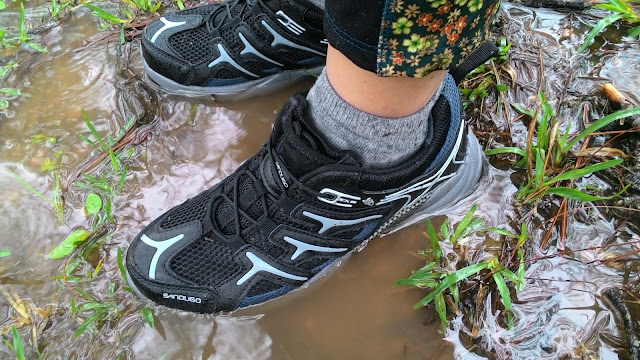 |
| The mesh uppers also serve as a sieve, so tiny rocks and bits of twigs don't get in the shoes |
 |
| The shoes dried more quickly than the socks |
I have yet to test the Sandugo Eiger out during a trail run (Yellow Trail or Eco Trail) and a long trek (Mt. Ulap again?), but so far it feels good--I just need to be really careful on slick surfaces such as mossy banks, slippery soil, and this kind of floor:
 |
| Well, one should be careful on most floors when your shoes are wet, anyway. |
I
walked 4 more kilometers after the test. It was just a little bit uncomfortable because I'm not used to walking that far with wet socks on, but shoe-wise, I have no complaints. The socks would probably have dried after all the walking if not for the incessant rain, but that's wet-season Baguio for you.
(Note to self: probably best to remove socks--or wear quick-dry ones--during river crossings in the future.)
Addendum (Sept. 3):
I was able to test the shoes on a "real" trail, albeit a short one. Because it rained yesterday afternoon, the
grassy hill at Wright Park was wet, with some of the footpaths soft and muddy. The park gave me the perfect conditions to see how the Sandugo Eiger would fare. Unfortunately I wasn't able to take photos because I intentionally left my phone at home so I could concentrate on training (without worrying about losing my phone or breaking it, or both).
The Sandugo Eiger performed as advertised--meaning it really does well on dry trails, even those lined with rocks, and when you have to go from trail to river and back again. It also means no, it's not the best shoes to wear when you're tackling slick surfaces (like sticky wet reddish soil or clay). It does well enough on soft ground of course, and on pine needle-covered trails, but because the treads are not that aggressive, there is a bigger chance of slipping on an incline.
Not much of a problem on relatively flat muddy ground, but of course do expect mud to cling on to the shoe. (It's all part of the experience!) You can "go around" the muddy part, but only if where you're walking/jogging/running is also part of the established trail. It's wrong to "widen" the trail and trample the ground/make a bigger impact on the environment. ;)
On that note, I had to be careful with the mud under my feet. I'm still not that confident about running on squishy ground, so I took it slow in the areas where there was about an inch or two of soft soil, and the areas that had slick clay and moss.
But while the mud didn't exactly suck my shoes in, my shoes were the ones that took in a bit of mud, through the outsoles where the drain ports are. I was able to get the most of it out by stomping my feet once I got back on the paved road, but some of it really stuck:
 |
| All this needs is a river! |
Good thing these shoes are really easy to clean--I think some running water and an old toothbrush will do to get the mud (and possibly small rocks) out. You can also hose it down--even if water gets inside the shoe (again, through the drain ports and/or the mesh uppers), it gets dry really fast, so you won't have to worry about wearing wet shoes the following day.
The Sandugo Eiger may not have the extra grip needed for muddy conditions, but I can see how great it will do on river crossings and hot, dry trails. I'm glad to have it.












